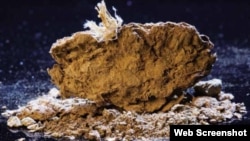A network of caves in rural Oregon may be the oldest site of human habitation in the Americas, suggesting an ancient human population reached what is now the United States at the end of the last Ice Age, Oregon officials said on Friday.
That realization prompted the U.S. National Park Service to add the Paisley Five Mile Point Caves to its list of nationally important archaeological and historical sites, the Oregon Parks and Recreation Department said in a statement.
Only recently have researchers become convinced that humans lived at the Paisley caves a thousand years before the human settlement documented in the so-called "Clovis" sites in New Mexico, Dennis Jenkins, director of the University of Oregon Archaeology Field School, said in the statement.
The "Clovis First" hypothesis holds that distinctive projectile-point artifacts found at multiple sites across the United States are signs of the first human settlements in North America, the statement said.
But Jenkins' team used radiocarbon dating to determine that more than 200 samples of human feces collected from the Paisley caves were deposited in the area 14,300 years ago, nearly 1,000 years efore the human settlement evidenced in the Clovis era.
Jenkins said the test findings provide "significant new information regarding the timing and spread of the first settlers in the Americas," suggesting an ancient human population reached what is now the United States at the end of the last Ice Age.
In addition to biological samples, Jenkins' team also found stones used to grind plant materials, woven plant fibers, modified animal bones and stemmed projectile points.
"The people living there 14,300 years ago were gathering and consuming aromatic roots, for which they would have needed special knowledge that would have developed over time," according to the press release announcing the site's placement on the National Register of Historic Places.
Today, the Paisley caves are surrounded by sagebrush in a sparsely populated area of south-central Oregon. But researchers believe the site was once a grassy plain containing a lake and populated by camel, bison and waterfowl.
Archaeologists first excavated the Paisley caves in 1938.
The University of Oregon's current research effort at the site began in 2002.
